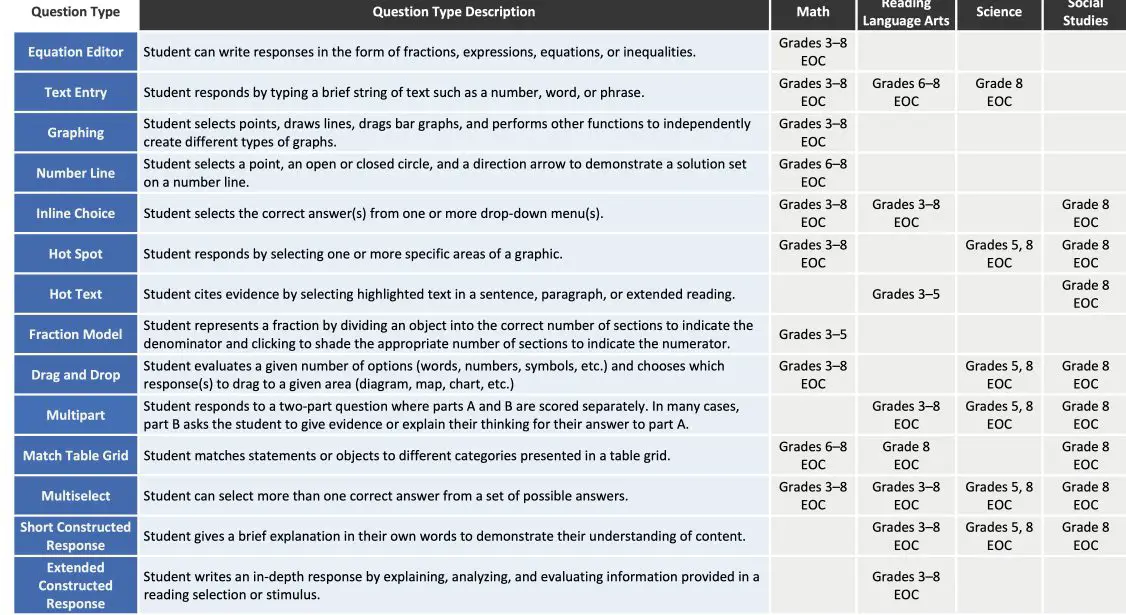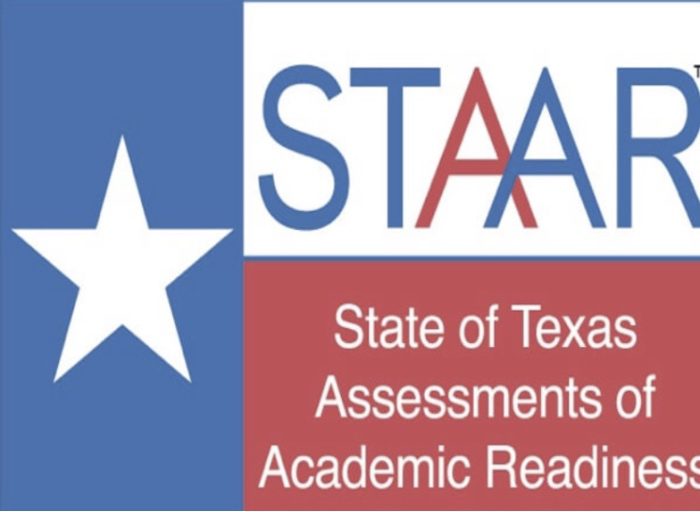STAAR or State of Texas Assessments of Academic Readiness, or STAAR, is a series of tests administered to public primary and secondary school students in Texas to assess their academic readiness. The purpose of this test is to evaluate students’ essential knowledge and academic readiness to proceed to the next grade level. We will examine how Texas measures academic readiness with STAAR in this post.
The STAAR tests Texas aim to test each student’s knowledge based on these subjects – Reading, Writing, Mathematics, Science, and Social Studies. The tests help teachers and even parents know the areas their children need improvement. The tests are conducted in the English Language and typically last between four to five hours.

2022-2023 ONLINE STAAR TEST TEXAS REDESIGN AND NEW QUESTION TYPES
Did you know that Texas legislation dictates that no more than seventy five percent of the new 2022-2023 online STAAR test be multiple choice?

2023 STAAR REDESIGNED TEST TEXAS GUIDES TO THE NEW QUESTION TYPES to help pass the STAAR test
SPANISH READING LANGUAGE ARTS GUIDE
OLDER THAN 2023 STAAR RESOURCES
STAAR TEST RESOURCES ON AMAZON
What if a child fails the STAAR test Texas?
Students are required to pass the text to move to the next grade and, of course, graduate. Students who fail Reading, Mathematics or both would be given two extra opportunities to pass them and get promoted to the next grade. Sometimes, the district board may give students the third trial, but they may have to repeat the class if they fail all the attempts.
STAAR tests used to be entirely conducted by Pearson Education until recently when the contract gave Educational Testing Service the power to create some of the tests under the guidelines of the Texas Education Agency. STAAR is conducted yearly and takes place at sites certified by the Texas Education Agency.
What Was the STAAR Test Called Before?
STAAR test didn’t begin until 2011. Before now, the test used to assess students was called Texas Assessment Knowledge and Skills, also known as TAKS. However, Texas Senate invalidated TAKS in Bill 1031 in 2007 because they were no longer satisfied with the unified tests. The new bill proposed students in grades 9-11 take assessments at the end of each course instead of taking general tests on core subjects.
What that means is students would have to take an ELA test to pass ELA. STAAR officially began in 2012, although students already enrolled in the 10th grade before the 2011/2012 session continued to take TAKS. The last set of students took TAKS in 2015.
How the STAAR Test is Developed
The TEA, Pearson Education, and public school collaborators combine to develop the STAAR test. The public school educators in Texas review the curriculum to determine the questions to set and assess the grade levels. Once the educators have gathered all the information they need and have come up with guidelines, they transfer them to the TEA and Pearson Education, who then comes up with the tests.
Before the final development, teachers from all over Texas are invited to Austin to review the tests. Then they organize a “mock test” for the students to help them understand the exam pattern and help them prepare further for the main one. Finally, the real STAAR tests in TEXAS are now set.
STAAR Test Texas By Grade Level
STAAR testing in TEXAS for grades 3-8 are usually taken during Spring, but End-of-Course assessments (for grades 9-11) can be taken throughout the year.
Students from grades 3 to 8 take the STAAR test at the end of a course.
As previously mentioned, subject tests include Reading, Writing, Math, Science, Social Studies, and probably mathematics-related courses like Algebra. A grade 9 – 11 student can only opt-out if they agree to be assessed with ACT, SAT, AP//IB, and TSI.
According to the TEA, STAAR tests are more rigorous than the TAKS, designed to measure students’ readiness for the tasks ahead of them. For high school students (grade 9-11), the core subjects are further subdivided and replaced with some – Algebra I and II, Geometry, Biology, World History, Physics, Chemistry, English I, II, III, World Geography, and U.S. History.
How the STAAR Test in TEXAS Is Taken
STAAR tests are usually taken in the student’s school. However, the tests can be conducted on approved sites by the TEA for students with special needs.
After the instructions are read out loud by the Texas Education Agency, the student will begin. The education agency gives each student four hours to finish the test, except for English tests that allow an additional hour. If a student is caught cheating, talking, or doing anything illegal, they will face legal discipline, so as the Test administrator.
Students can take the STAAR test online if logistics problems prevail. Additionally, students with cognitive impairment can also take the STAAR test in the form of STAAR-Alt2. There are no modified versions for bilingual students.
The 22 -23 STAAR test is now entirely online. There is now a new variety of questions in the online STAAR test.
STAAR Scoring System
SAAR uses a type of rating system to grade students assessments. A student is expected to attain a specific store before they can proceed to the next class. The student needs a minimum score of 1595 to pass the test. That accounts for a minimum of 25%.
At the end of the year, students receive a report card of their assessment. It includes how excellent or poor they were in the tests and the percentile of the current year’s progress against the previous year. This is how the teachers know if a student is doing well or not. Then, they can come up with an approach to help such students do better.
Why the STAAR Test in TEXAS should Be Banned
The TEA concluded that there would be no punishments for students skipping STAAR testing in 2021, but seniors are exempted. It’s mandatory that they take the test before they can graduate. However, many teachers and students have voiced their vituperations for the conduct of the tests, citing that teachers and students don’t have enough time to prepare for the tests.
Additionally, both the students and teachers agreed that the testing was tough. Students preparing for STAAR TEXAS suffered anxiety days before commencement because they understood the consequences of failing. As a result, everyone called for the ban of the test.
The intention for developing STAAR test TEXAS was pretty clear, but how it’s conducted is lamentable. A little adjustment to the conduct will make it better and favorable in the eyes of the students and teachers.
For high school students planning to move to Texas to start school, this is how Texas uses STAAR to measure academic readiness.
